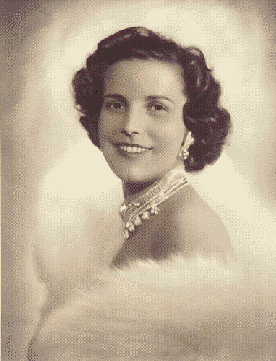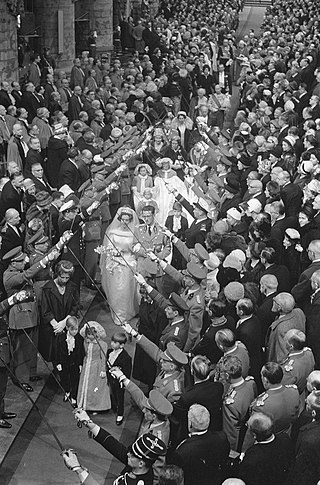| |||||
| Decades: | |||||
|---|---|---|---|---|---|
| See also: | Other events of 1951 List of years in Belgium | ||||
The following events happened during 1951 in the Kingdom of Belgium.
| |||||
| Decades: | |||||
|---|---|---|---|---|---|
| See also: | Other events of 1951 List of years in Belgium | ||||
The following events happened during 1951 in the Kingdom of Belgium.



Leopold III was King of the Belgians from 23 February 1934 until his abdication on 16 July 1951. At the outbreak of World War II, Leopold tried to maintain Belgian neutrality, but after the German invasion in May 1940, he surrendered his country, earning him much hostility, both at home and abroad.

Albert I was King of the Belgians from 23 December 1909 until his death in 1934.

Baudouin was King of the Belgians from 17 July 1951 until his death in 1993. He was the last Belgian king to be sovereign of the Congo, before it became independent in 1960 and became the Democratic Republic of the Congo.

Belgium is a constitutional, hereditary and popular monarchy. The monarch is titled King of the Belgians and serves as the country's head of state and commander-in-chief of the Belgian Armed Forces. There have been seven Belgian monarchs since independence in 1830.

Albert II is a member of the Belgian royal family who reigned as King of the Belgians from 9 August 1993 until his abdication on 21 July 2013.

Astrid of Sweden was a member of the Swedish House of Bernadotte and later became Queen of the Belgians as the first wife of King Leopold III. Following her marriage to Leopold in November 1926, she assumed the title of Duchess of Brabant. Astrid held the position of Queen of the Belgians from 23 February 1934 until her death in 1935. Known for her charitable efforts, she focused particularly on causes related to women and children.

Princess Lilian of Belgium, Princess of Réthy was the second wife of King Leopold III of Belgium. Born in the United Kingdom and raised in Belgium, she became a volunteer as a car driver that transported wounded Belgian and French to the hospital in Bruges during World War II. Lilian married King Leopold III in 1941 and became consort of the Belgian monarch. The couple had three children. She was also a stepmother to Leopold III's children from Queen Astrid and became the "first lady" of Belgium during the first nine years of her stepson King Baudouin's reign. Her charity work revolved around medicine and cardiology.

Fabiola Fernanda María-de-las-Victorias Antonia Adelaida de Mora y Aragón was Queen of the Belgians as the wife of King Baudouin from their marriage in 1960 until his death in 1993. The couple had no children, as all five of Fabiola's pregnancies resulted in miscarriage, so the Crown passed to her husband's younger brother, King Albert II.

The National Basilica of the Sacred Heart is a Roman Catholic minor basilica and parish church in Brussels, Belgium. It is dedicated to the Sacred Heart, inspired by the Basilique du Sacré-Coeur in Paris. Symbolically, King Leopold II laid the first stone in 1905 during the celebrations of the 75th anniversary of Belgian independence. The construction was halted by the two World Wars and finished only in 1970. Belonging to the Metropolitan Archdiocese of Mechelen–Brussels, it is one of the largest churches by area in the world.

Elisabeth of Bavaria was Queen of the Belgians from 23 December 1909 to 17 February 1934 as the wife of King Albert I, and a duchess in Bavaria by birth. She was the mother of King Leopold III of Belgium and of Queen Marie-José of Italy, and grandmother of kings Baudouin and Albert II of Belgium, and Grand Duchess Joséphine-Charlotte of Luxembourg.

Princess Marie-Esméralda of Belgium, Lady Moncada, is a member of the Belgian royal family. She is the half-aunt of King Philippe of Belgium and Henri, Grand Duke of Luxembourg. Princess Marie-Esméralda is a journalist, author, documentary-maker, environmental activist and a campaigner for the rights of women and indigenous people.

The Royal Palace of Brussels is the official palace of the King and Queen of the Belgians in the centre of the nation's capital, Brussels. However, it is not used as a royal residence, as the king and his family live in the Royal Palace of Laeken in northern Brussels. The website of the Belgian Monarchy describes the function of the Royal Palace as follows:
The Royal Palace is where His Majesty the King exercises his prerogatives as Head of State, grants audiences and deals with affairs of state. Apart from the offices of the King and the Queen, the Royal Palace houses the services of the Grand Marshal of the Court, the King's Head of Cabinet, the Head of the King's Military Household and the Intendant of the King's Civil List. The Royal Palace also includes the State Rooms where large receptions are held, as well as the apartments provided for foreign Heads of State during official visits.
Jean De Bast was a Belgian postage stamp draughtsman and engraver.
Belgium–United Kingdom relations are foreign relations between Belgium and the United Kingdom. Belgium has an embassy in London and 8 honorary consulates. The United Kingdom has an embassy in Brussels.

The Royal Museum of the Armed Forces and Military History, also known as the Royal Military Museum, is a military museum that occupies the two northernmost halls of the historic complex in the Parc du Cinquantenaire/Jubelpark in Brussels, Belgium. This site is served by the metro stations Schuman and Merode on lines 1 and 5.

Belgian–Dutch relations refer to interstate relations between Belgium and the Netherlands. It can be seen as one of the closest international relationships in existence, marked by shared history, culture, institutions and language, extensive people-to-people links, aligned security interests, sporting tournaments and vibrant trade and investment cooperation. Both nations are members of the European Union and NATO and, together with Luxembourg, form the Low Countries and the Benelux economic union.

The royal question was a major political crisis in Belgium that lasted from 1945 to 1951, coming to a head between March and August 1950. The question at stake surrounded whether King Leopold III could return to the country and resume his constitutional role amid allegations that his actions during World War II had been contrary to the provisions of the Belgian Constitution. The crisis brought Belgium to the brink of a civil war. It was eventually resolved by the abdication of Leopold in favour of his son King Baudouin in 1951.

The Royal Crypt lies underneath the Church of Our Lady in Laeken, Brussels, Belgium. It is the official burial place of the Belgian royal family, including all the Kings of the Belgians and their wives. Several members of the family are buried elsewhere, however, due to their marriage with foreign royalty or nobility.

The wedding of King Baudouin of Belgium, and Doña Fabiola de Mora y Aragón took place on Thursday, 15 December 1960. The couple was married first in a civil ceremony held in the Throne Room of the Royal Palace of Brussels and then in a Roman Catholic ceremony at the Cathedral of St. Michael and St. Gudula.
Events in the year 1955 in Belgium.